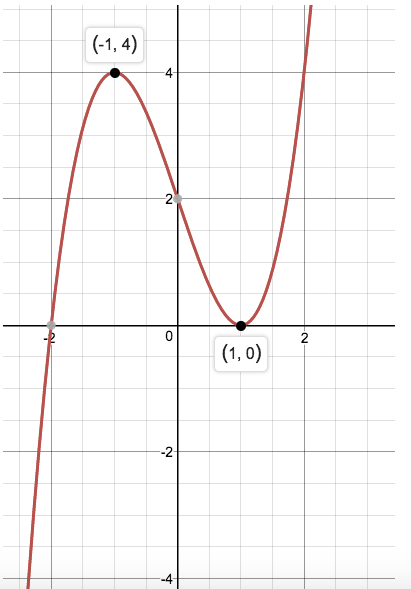Describe the transformations of the following function in reference to the parent function.
f(x) = 2/3(x - 3)^3 - 1
vertical shrink by a factor of 2/3, horizontal translation right 3, vertical translation down 1
Solve for x.
6 + abs(9 + x) = 22
x = 7, -25
Solve for x. Write you answer in interval notation.
abs(x + 5)/2<= 2
[-9, -1]
Given f(x), find
f^-1(x)
f(x) = (10-4x)/5
f^-1(x) = (-5x + 10)/4
Is the following function even, odd, or neither.
f(x) = -3x^5 - 7x + 5
neither
Create a new function, h(x), that transformations f(x) in the follow ways:
-reflection over the x-axis
-horizontal stretch by a factor of 2
-vertical translation up 3
h(x) = -f(1/2x) + 3
Solve for x.
2abs(x - 4) + 3 = -19
no solution
Solve for x. Write your answer in interval notation.
-8abs(x - 10) < -112
(-oo, -4), (24, oo)
Given f(x), find
f^-1(x)
f(x) = 1/(x + 3) + 2
f^-1(x) = 1/(x - 2) - 3
Describe the end behavior of the following function, using proper notation. Then describe domain and range in interval notation.
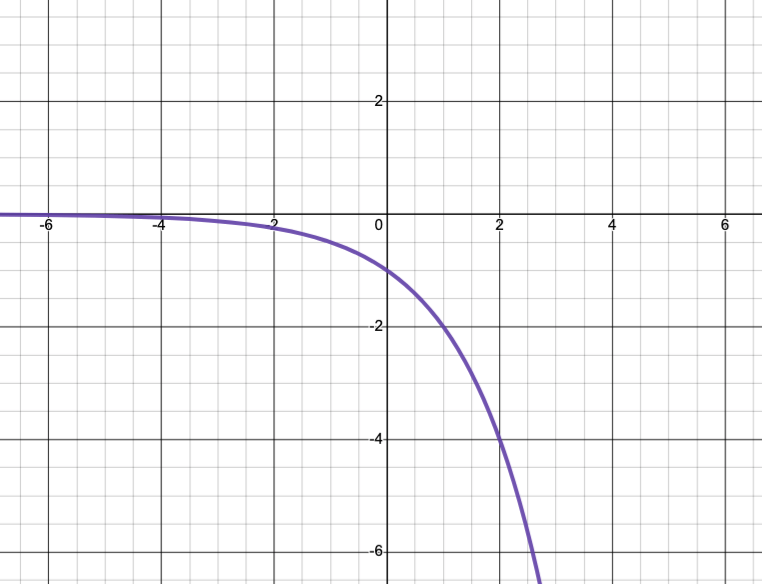
x -> oo, f(x) -> -oo
x->-oo, f(x) -> 0
D: (-oo, oo) R: (-oo, 0)
Create a new function, h(x), that transforms the function f(x) in the following ways:
-vertical stretch by a factor of 3
-reflection over the y-axis
-horizontal shrink by a factor of 3/4
h(x) = 3f(-4/3x)
Graph the following function and determine the vertex:
y = 3abs(2x - 2) - 2
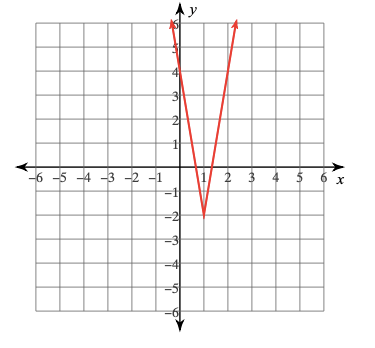
vertex: (1, -2)
Solve for x. Write your answer in interval notation:
9 + abs(-3 - p) <= -2
No Solution
Determine algebraically if the following two functions are inverses. State how you know.
f(x) = 4/(x - 2) - 3
h(x) = 4/(x + 3) + 2
Yes because
f(f^-1(x)) = x or f^-1(f(x)) = x
Describe the end behavior of the following graph using proper notation. Then, describe the domain and range in interval notation.
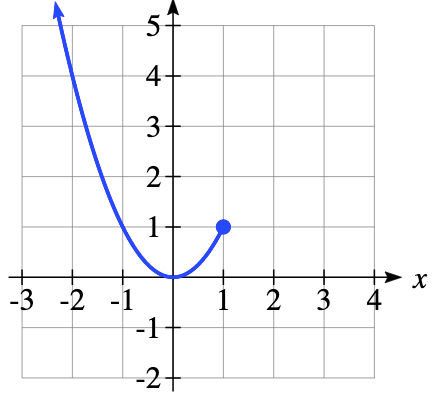
No end behavior on the right
x->-oo, f(x) -> oo
D: (-oo, 1] R: [0, oo)
Describe the transformations of the function below, f(x), in reference to the parent function, p(x)
p(x) = sqrtx, f(x) = -sqrt(3x + 6)
-reflection over the x-axis
-horizontal shrink by a factor of 1/3
-horizontal translation left 2
Solve for x.
4abs(7x + 1) + 5 = 9
x = 0, -2/7
Solve for x. Write your answer in interval notation.
abs(8 - 3x) - 2 >= -6
(-oo, oo)
Consider the following function below. Determine if the inverse is also a function and state how you know.
{(2, 1), (6, -3), (-2, 0), (3, -3)}
No, the inverse is not a function because the function is one-to-many with (6, -3) (3, -3)
Describe where the function is increasing and decreasing, then where the function is positive and negative. Use interval notation:
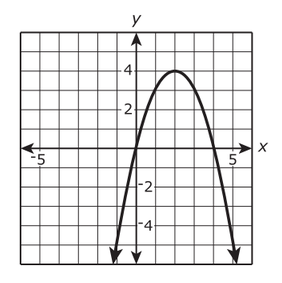
Increasing:
(-oo, 2)
Decreasing:
(2, oo)
Positive:
(0, 4)
Negative:
(-oo, 0), (4, oo)
Describe the transformations of the functions:
f(x) = 5/4f(-2x + 3) - 5
-vertical stretch by a factor of 5/4
-reflection over the y-axis
-horizontal shrink by a factor of 1/2
-horizontal translation right 3/2
-vertical translation down 5
Write the following function as a piecewise function:
f(x) = -2abs(x - 5) + 3
y = -2x + 13; x > 5
y = 2x - 7, x <=5
Solve for x. Write your answer in interval notation:
6 - 5abs(7 + 5x)>=-109
[-6, 16/5]
How would you restrict the domain of the following function to ensure that the inverse is also a function? Write your answer in interval notation.
y = 2x^2 - 12x + 5
[3, oo) or (-oo, 3]
Sketch a graph with the following characteristics:
-only negative over the interval (-inf, -2)
only positive over the interval (-2, 1), (1, inf)
-increasing (-inf, -1), (1, inf)
